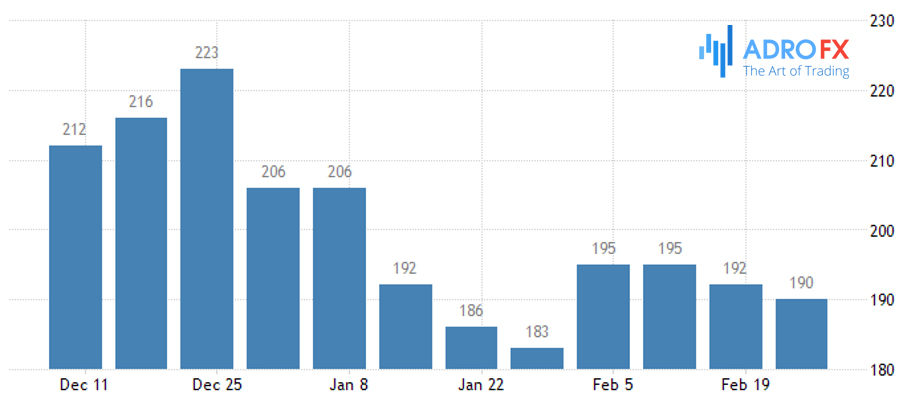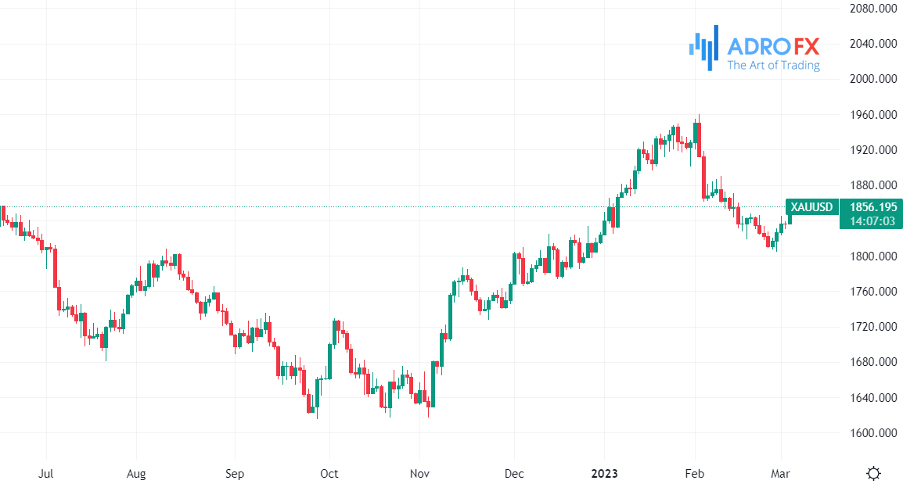What's Moving the Markets This Week? | Daily Market Analysis

Key events:
- UK – Construction PMI (Feb)
- Canada – Ivey PMI (Feb)
Despite the Fed's best efforts, the labor market remains overheated as initial jobless claims fell by 2,000 (n/a) to 190,000 and U.S. service sector business activity remains elevated. In the context of fighting inflation, this threatens to lead to a tightening of monetary policy and, consequently, a worsening of economic conditions.

Experience shows that the effect of the Fed's actions will be most pronounced no later than the second or third quarter of this year. It is by the second quarter data that we should be able to see the cooling of the labor market and the drop in indicators (sales and profits of companies) in all its glory. And most importantly, a significant reduction in the inflation rate. Why else would we make such a mockery of the economy?
But all of this is theoretical. And practically... practically the most interesting thing is that the specter of recession has yet to take shape.
Goldman Sachs (NYSE: GS) analysts expect a 2% growth in U.S. GDP for Q1 2023, and the Atlanta Fed's GDPNowcast indicator points at 2.3%. That could change if Wednesday's data shows a decline in U.S. job openings and Friday's data shows a decline in nonfarm payrolls from the ADP.
Another question is, will that be enough to change the Fed's rhetoric?
Frankly, it is doubtful.
Fed Chairman Jerome Powell will be addressing Congress on Tuesday and Wednesday. Most likely, the rhetoric will still be hawkish. Although it is in Congress that the Fed chief may suddenly hint: "When we see signs of a cooling in the labor market and a slowdown in inflation, we'll stop all this nonsense right away. And as we know, the next data on the labor market in the USA (for February) will be published this Friday. In short, experts don't expect any surprises from Powell, but who knows...
Another important factor for the markets will be the Biden administration's budget proposal on Thursday. If the White House plan includes more spending on the economy besides raising taxes, the markets may get more nervous. The reason is the same: the threat of higher inflation and a rate hike above 5.5% to 5.75%. For now, however, all is quiet.
After the market spurt on Friday, American futures are in the green.

More importantly, after the surge in US10Y yields last Thursday (as much as 4.08-4.09), we saw a sharp pullback on Friday. And there you go – the premarket yield is now at 3.93. Those are some serious jumps.

The DXY index is also down a bit in the last 2 days - already 104.5. The dollar has bounced back a bit, which is good for the markets. However, it might continue going up at any moment.
Frankly speaking, the situation is unstable. The market may fly in different directions this week. So we will act on the situation.
We do not really believe in a 4300 on the S&P 500 (though the amusing thing is that we cannot rule that scenario out). But if we approach the levels of 4100-4150, most likely, it will make sense to reduce long positions if any.

Gold has rebounded strongly. Theoretically, we expect another 1.5-2% growth at the moment. But it's quite possible that we'll see jumps in different directions here as well. Everything is very unstable.
Anyway, you have to be very careful this week not to miss important market moves.
In Asia, we have the National People's Congress. Less ambitious than expected economic goals for 2023 will likely put pressure on the Chinese stock market and commodities, especially oil. We shall see.









